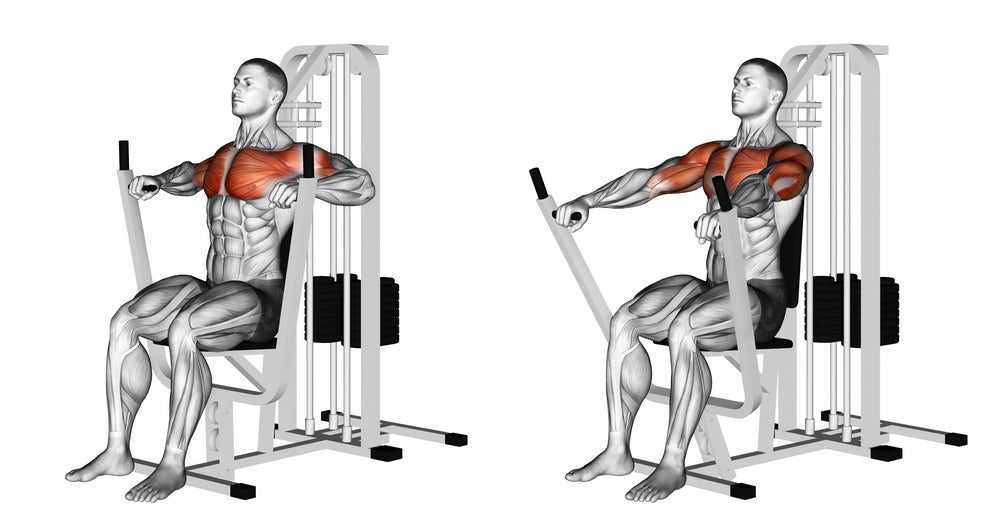Exercise Anatomy
Machine Bench Press
The Machine Bench Press is a valuable exercise for building upper body strength, targeting the chest, shoulders, and triceps. Unlike free weights, the machine provides a controlled range of motion, making it suitable for beginners and minimizing the risk of injury. Its simplicity and ease of use make it an effective option for anyone looking to enhance overall upper body power and muscle development.

Major Muscles and Actions Involved
During the Machine Bench Press, the primary joint action is elbow extension, where the forearm moves away from the upper arm. This movement engages the triceps brachii muscles. Additionally, the chest muscles, specifically the pectoralis major, and the anterior deltoids of the shoulders play a significant role in the exercise, contributing to the pushing motion.

Sports Uses
The Machine Bench Press is directly beneficial for various sports activities that demand upper body strength and power. Athletes involved in sports such as powerlifting, weightlifting, and bodybuilding incorporate this exercise into their training routines to enhance chest, shoulder, and triceps strength, contributing to improved performance in lifting and pushing movements. Additionally, individuals participating in contact sports like football or rugby can benefit from the increased upper body power generated through Machine Bench Press, aiding in activities like blocking opponents or pushing against resistance. The exercise's focus on muscle engagement and controlled movement makes it a valuable asset for athletes seeking to amplify their upper body capabilities across a range of dynamic and forceful sports scenarios.
Exercise Tips
- Proper Technique: Maintain a stable and controlled movement throughout the exercise. Ensure your back is flat against the bench, and your feet are firmly planted on the floor.
- Full Range of Motion: Aim for a complete range of motion, allowing the bar to descend until it lightly touches your chest, and then press it back up to full arm extension without locking your elbows.
- Appropriate Weight: Start with a manageable weight to perfect your form. Gradually increase the weight as your strength and proficiency improve, avoiding excessive loads that compromise technique.
- Grip Considerations: Choose a grip width that aligns with your shoulder width, promoting optimal muscle engagement. Experiment with different grips to find the most comfortable and effective position for your individual anatomy.
- Variations for Targeting Muscles: Explore different grip styles, like a wide grip for emphasizing the outer chest or a close grip for increased triceps involvement. These variations can add diversity to your workout routine.
- Triceps Activation: Emphasize the contraction of your triceps during the upward phase of the press to maximize triceps engagement. This can contribute to balanced muscle development.
- Breathing Technique: Inhale as you lower the bar towards your chest and exhale as you press it back up. Maintain a consistent and controlled breathing pattern throughout the exercise to optimize oxygen flow to your muscles.
